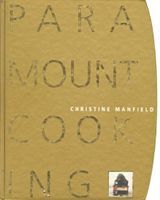Advertisement
Pies and Pastries
Appears in
Published 1995

In professional haute-cuisine cooking, pastry is traditionally studied and practised separately from the rest of the cooking process, such is its depth and intensity. I find it an interesting, challenging and productive part of my cooking repertoire. The uses for pastry are many and varied; it is the perfect receptacle for carrying other foods.
Making pastry requires patience, care, feeling and skill. It can be fickle and bothersome, difficult and contrary until you develop a deft hand, feel and understanding for it. It requires only a few basic concepts to understand and achieve the most rewarding results. As with any other aspect of cooking, there are certain rules to follow and procedures to adopt to guarantee a successful result. Temperature (of the ingredients, room, equipment and workbench) is one of the primary deciding factors. Pastry must be made and dealt with in a cool environment (under 18°C) with the fat content (butter, shortening, cream and so on) best at refrigerator temperature. Proceed with pastry preparation for short intervals to ensure that the correct temperature is maintained and not varied. It is also important not to overwork the dough; the gluten should remain undeveloped, unlike bread where the opposite rule of thumb applies.

